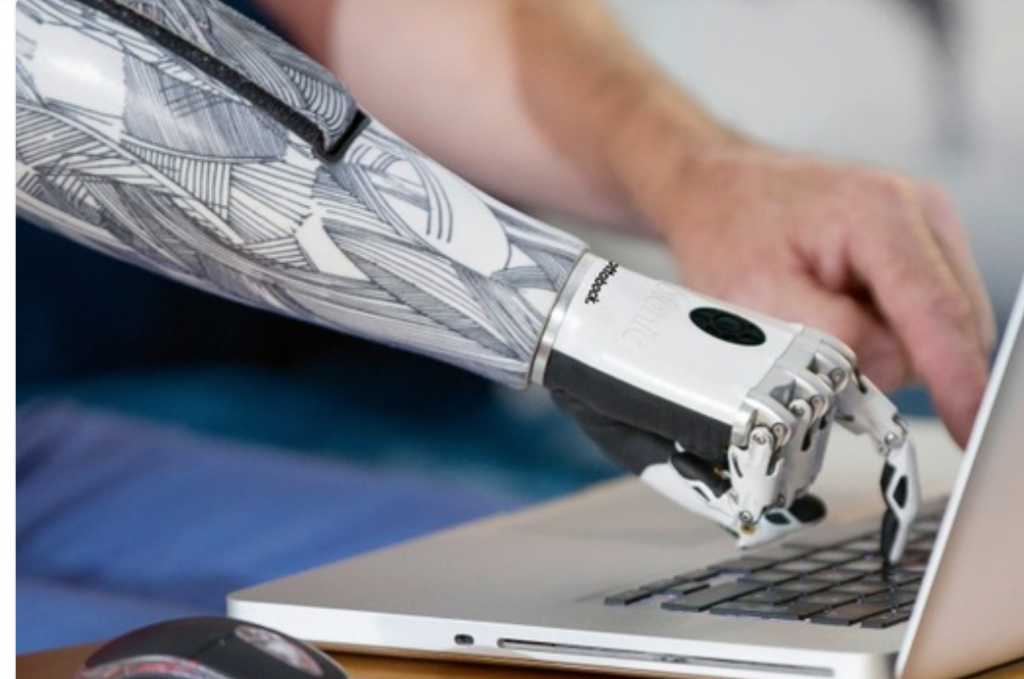
Intuitive AI ss machine learning for sse in prosthetics. (Source: ottobook)
Myoelectric Sensing Makes It Possible for AI to Predict the Intent of a User’s for Prosthetics
The use of prosthetic limbs has come a long way since Long John Silvers’s wooden peg leg. For years modern designers have spent much of their time being concerned with the mechanical workings of the limb, whether arm or leg. Now a completely revolutionary idea has come to prosthetics that really will make a huge difference for patients.
The AI being merged with the prosthetic limbs is another anticipatory algorithm. A tool that will examine intent and purpose in a split second.
Despite these breakthroughs, most users find prosthetic arms difficult to control. The most common control mechanism records the electrical activity in the arm muscles – a technique known as myoelectric sensing—and then uses this to actuate the prosthetic.
The problem is that users usually have to contract their muscles in specific combinations of patterns to generate hand or wrist motions. These patterns are often counterintuitive, time-consuming, and frustrating.
An article published by discovermagazine.com talks about adding AI that can predict how a patient wants to move after several sessions of training.
Translating Intention
Now Diu Khue Luu and Anh Tuan Nguyen from the University of Minnesota with colleagues, have found a way to do this using an AI decoder that learns the user’s intention based on the nerve signals it senses in the arm.
“We present a neuroprosthetic system to demonstrate that principle by employing an artificial intelligence (AI) agent to translate the amputee’s movement intent,”
An implant of a nerve interface electrode requires some minor surgery which can lead to inflammation problems.
To train the AI system, the user wears a data glove on the uninjured hand and then repeatedly practices a hand movement in this and the phantom hand. During this process, the data glove records the intended movement while the electrodes record the nerve signals in the amputated arm.
In tests, the subjects successfully achieve the intended action 99.2% of the time with a median reaction time of 0.81 seconds.
These new interfaces are more exciting medical changes that AI is providing for nearly every field of medicine. The changes are not only amazing but they are coming at a faster pace than they did just two years ago.
And perhaps the most exciting part of this new approach is the tactile return that the patient will be able to feel. Yes, a closed-loop sensor that allows the patient to feel what they have touched with their prosthetic limb. This will be simply miraculous for many.
read more at discovermagazine.com







Leave A Comment